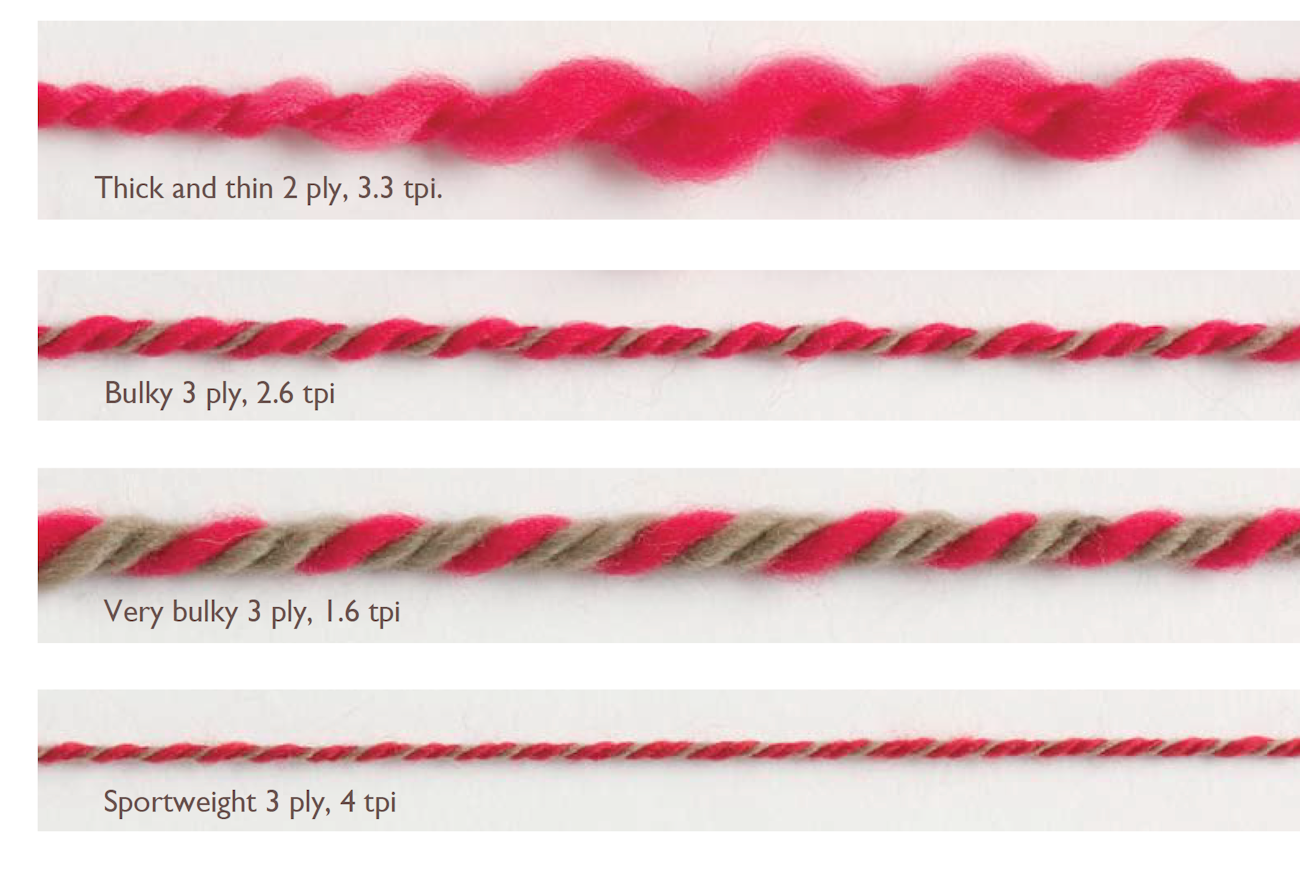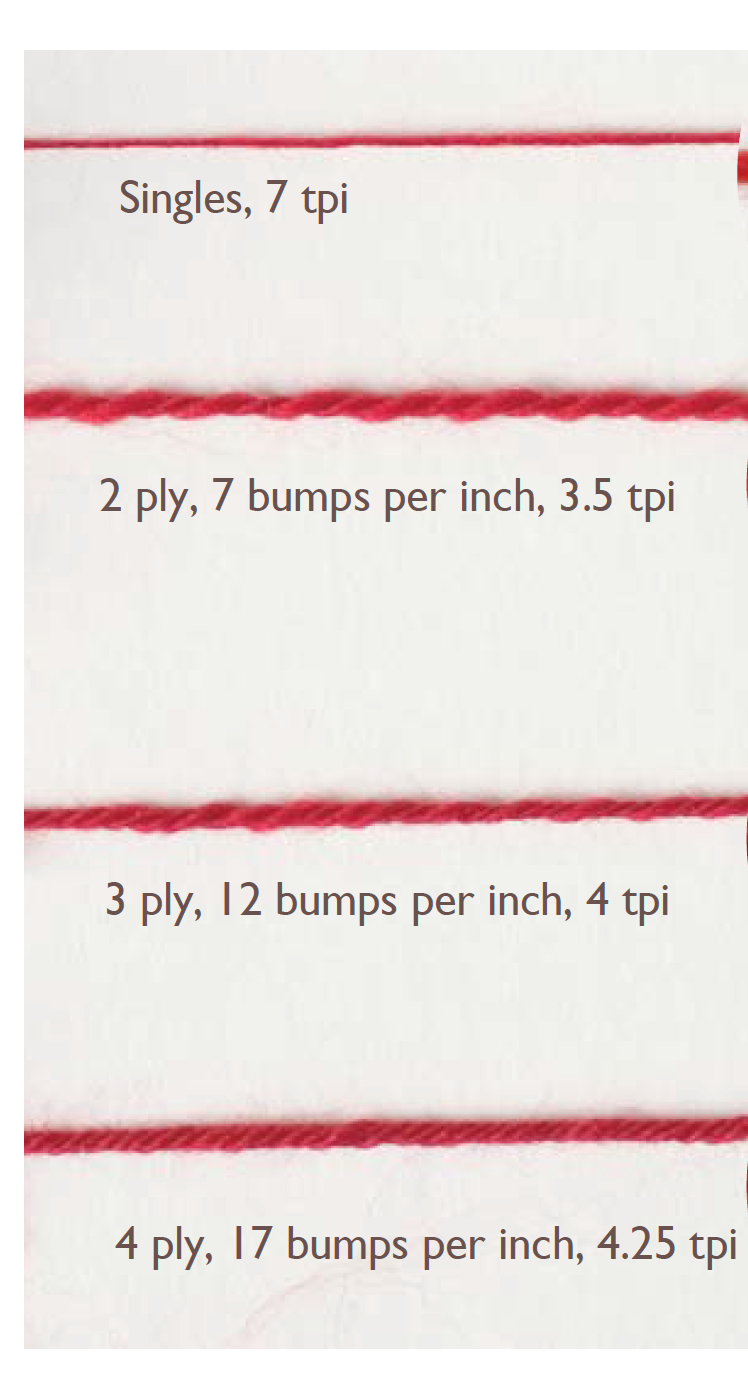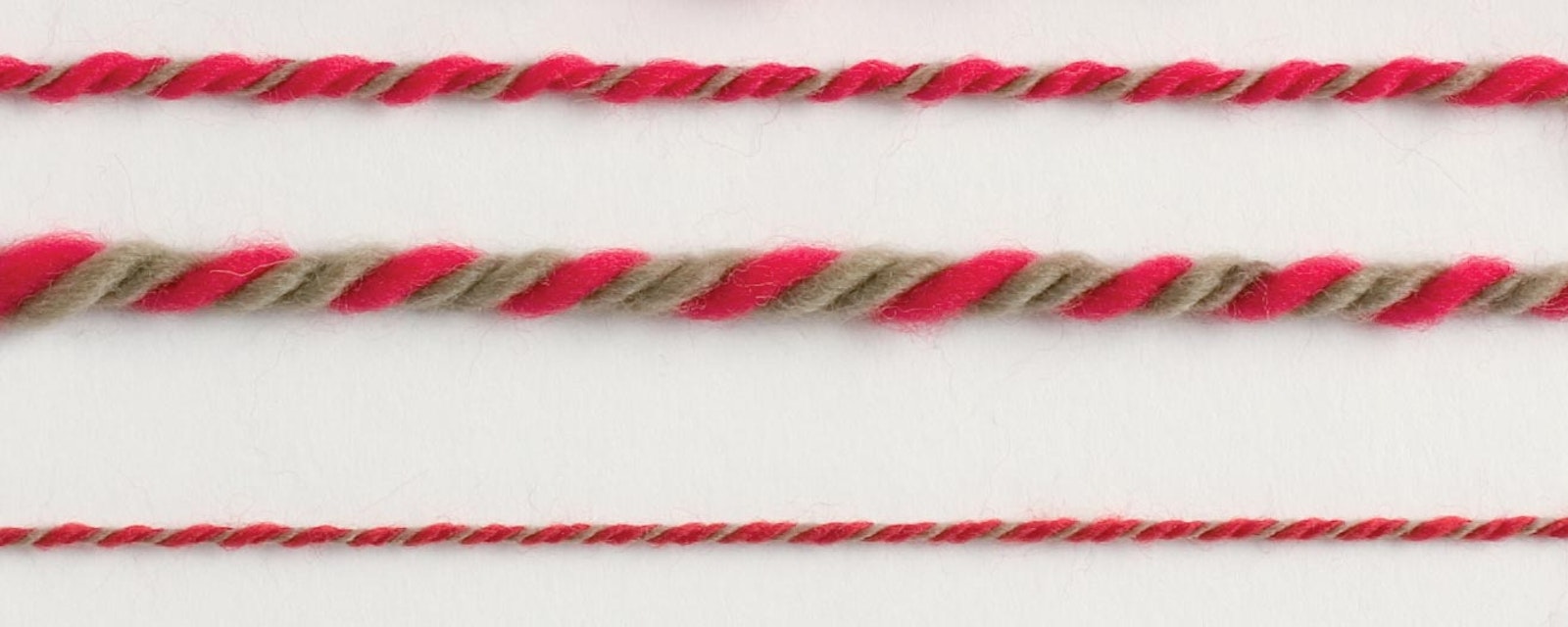Twist is what holds fiber together. We use it every time we spin, and still twist perplexes us. Some (or maybe even most) of us don’t pay that much attention to the amount of twist we put into our yarn. We just spin and end up with the amount of twist we end up with. We might know we need more twist for fine wools or silk. Generally short staples need more twist than longer staples, but more is such a relative term. Fat yarns require less twist than thin yarns but how much less? The answers depend. They depend on the fiber being spun, the fiber preparation (carded or combed), the drafting method (short or long draw), and the desired result. We are tactile and feel what is right. But if we ever want to re-create our yarns or describe them to others, it’s important that we can record a yarn’s twist properties in a meaningful way.
Direction
The first thing we consider when spinning is direction. Just think, if you start your spindle or wheel in one direction to begin spinning your yarn, only to turn the whorl in the opposite direction with the next length of fiber, you will untwist the yarn you’ve already created. So each time you begin to spin, you must decide whether you will spin clockwise or counterclockwise. Spinning in the clockwise direction (right) will result in an Z-twist, while spinning in the counterclockwise direction (left) will result in a S-twist.
Singles
Singles can be spun in either direction. Singles spun with active twist will skew knitted or woven fabric, which can be used as a design feature. If you finish your yarn by hanging it weighted to dry, keep in mind that any active twist is merely lying dormant. The next time moisture is introduced (perhaps just from humid weather), twist will be activated. For this reason, it can be difficult to spin singles with just the right amount of twist to use in projects, but it is possible.

Thicker yarns require less twist. Generally, thick and thin yarns aren’t described well by tpi. Keep this in mind, and measure your twist over a longer span of yarn and then average it.
Plying
Twist is also an important part of plying. Just as singles can be spun in either direction, plying can also take place in either direction. Plying singles in the same direction they were spun will add twist, while plying in the opposite direction will remove twist. This is why, when a fresh singles is allowed to twist back on itself, the resulting two-ply yarn will have about half the twist of the singles that makes it up. Adding that amount of twist during plying will accomplish a balanced yarn. Once your singles is no longer fresh (perhaps after only a day on the bobbin), allowing it to ply back on itself is no longer a valid test. Because of this, it is always a good idea to capture a length of your yarn plied back on itself into a two-ply yarn, and perhaps with three or more plies, to save with your records for when you are ready to ply the yarn. Plying yarns releases some of the singles twist. A singles that makes a lovely three-ply yarn may create a sloppy two-ply. You will not be able to judge how balanced your plied yarn is until it is finished (wet or steam set) due to the dormant twist in the singles.

The same Z-spun singles was used to create the three yarns below all S-plied. This is only meant to be one example and because the yarns here are handspun they do have some inconsistencies and slight variances. It is possible to see that as the number of plies increases the yarns are more tightly plied. This also corresponds to an increased thickness in the final yarn.
Keeping records
When considering a completed yarn, it’s important to start from the beginning. What was the fiber used? How was it prepared? Recording the wraps per inch and yards per pound will further help you reproduce the yarn in the future. While making notes of such information, consider the details of your twist, including the direction and twists per inch (tpi). The tpi should be recorded for both your singles and the plied yarns.
Measuring the tpi of a singles can be challenging because it can be difficult to see individual fibers. One technique is to introduce a bit of fiber in a contrasting color into the yarn being spun so that the twist can be easily tracked. Each time the contrasting fiber wraps completely around the yarn is one twist. Alternatively, you can use two paper clips to mark a 1-inch section of the yarn; then count the revolutions one paper clip must be turned to untwist the fibers and make them parallel to each other while holding the other paper clip steady. To determine the tpi of
a plied yarn, you’ll want to count the bumps per inch and divide that by the number of plies twisted together.
This article initially appeared in Spin Off Winter 2007.

